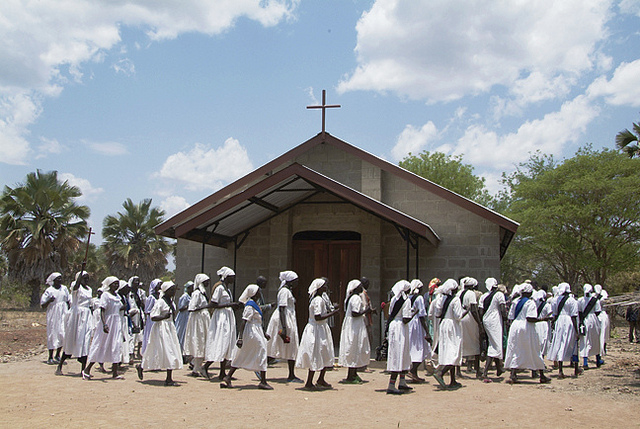Clipping the Church December 16, 2012
Author: Beach Combing | in : Modern , trackback***Nine precious days to write a book on the Medieval North Atlantic, expect then a profusion of posts on this subject – there have been a few already. Expect also break down in answering emails. Sorry. Must focus.***
Clipping the Church: a cute little custom that Beach has not been able to properly parallel.
On the morning of Shrove Tuesday [Bradford upon Avon], from time immemorial, a bell has been tolled. The original purpose of such tolling has, of course, been long forgotten, though, no doubt, in olden times the people were thus summoned to confess their sins to the priest, or to ‘shrive’ themselves as it was called, the especial work of Shrove Tuesday, whence it derives its name. Shortly after the bell ceased, all the boys and youths of the town, both those from the schools and those apprenticed to divers crafts – custom, indeed, had given to the latter a sort of presumptive claim to a holiday on the occasion – clustered in great numbers in the churchyard, and sought, by joining hands, entirely to encircle the church. There was, of course, on the circle being completed, the usual quantity of jumping and shouting. They called this ceremony ‘Clipping the Church’…
What was the origin or first intention of this custom it is impossible now to say. Were it observed at the time of the festival kept in commemoration of the consecration of the church, namely on Trinity Monday, we should judge it to be a relic of the old sports and pastimes usual on such occasions. In days gone by, fairs were commonly held in churchyards; indeed, within these very few years such have been held in that of St. James’, Bristol, when the people thought little of dancing about the church. In Malkin’s Scenery and Antiquities of South Wales we are told, ‘The custom of dancing in the churchyard at their feasts and revels is universal in Radnorshire, and very common in other parts of the Principality. Indeed, this solemn abode is rendered a kind of circus for every sport and exercise. They play at ‘fives’ and ‘tennis’’ against the walls of the church. They do not dance on the graves, but on the north side where there are no graves.’ In the case of Bradford churchyard, the booths, at the time of the annual fair, were in olden time brought close to its limits, and the south wall of the church tower shows unmistakable evidences of having been used for the balls of the tennis players. The Boys’ Dance round the church, however, formed no part of the Trinity Festival.
The author continues.
It is possible that the custom we have been describing is the relic of some very ancient observance. Though we do not profess to rely on the facts we are about to mention as an explanation of this Bradford custom, yet still they lend some colour to a conjecture that its origin may be sought in extreme antiquity.
The author then begins to speculates about dancing around stone circles in prehistory, naturally Baal comes into it! Almost as interesting for Beach is the way that this custom seems to have migrated. It is a nice example of how we should be careful before announcing an unusual tradition as going back to the times of Baal. It is also a nice example of how customs, new or old, die.
There is another custom connected with the fabric of the church which is well worth recording. The account which I am able to give of it has been kindly furnished to me by the Rev. A. B. Timbrell, Vicar of Cradley, in Staffordshire. The substance of his letter I must give in my own words. He tells me that what is called in his neighbourhood ‘Clipping the Church’ has prevailed for some time, although his parish is, comparatively speaking, a new one, dating from 1841, and the church was erected in 1798. The custom must therefore have been introduced in imitation of that prevalent in those parts – perhaps from Wolverhampton, as we shall see presently. The practice, he tells me, was for the children in the national schools to join hand in hand round the church, and to dance and shout. If there were not enough children in the schools to surround the church, idle boys and girls from the streets were called in. ‘Last year’, says Mr. Timbrell, ‘the first of my incumbency, I continued the practice, minus the dancing, and then assembled the children on the steps in front of the church, and made them sing a hymn, and then gave them a short address, explaining the custom to mean that the church belonged to them as baptised Christians. ‘This year,’ proceeds the vicar, ‘as there was nothing of antiquity in the custom, so far as this parish is concerned, I discontinued it, and find that I have gratified devout church people by doing so. My own impression,’ adds Mr. Timbrell, ‘is that the practice was introduced by one of my predecessors, a Mr. Jones, presumably a Welshman, who died about 1848. No such custom exists or has existed at the Mother Church of this parish, Halesowen, so far as I know.’
The death of the custom or did it hold out somewhere in the shires? drbeachcombing AT yahoo DOT com
***



